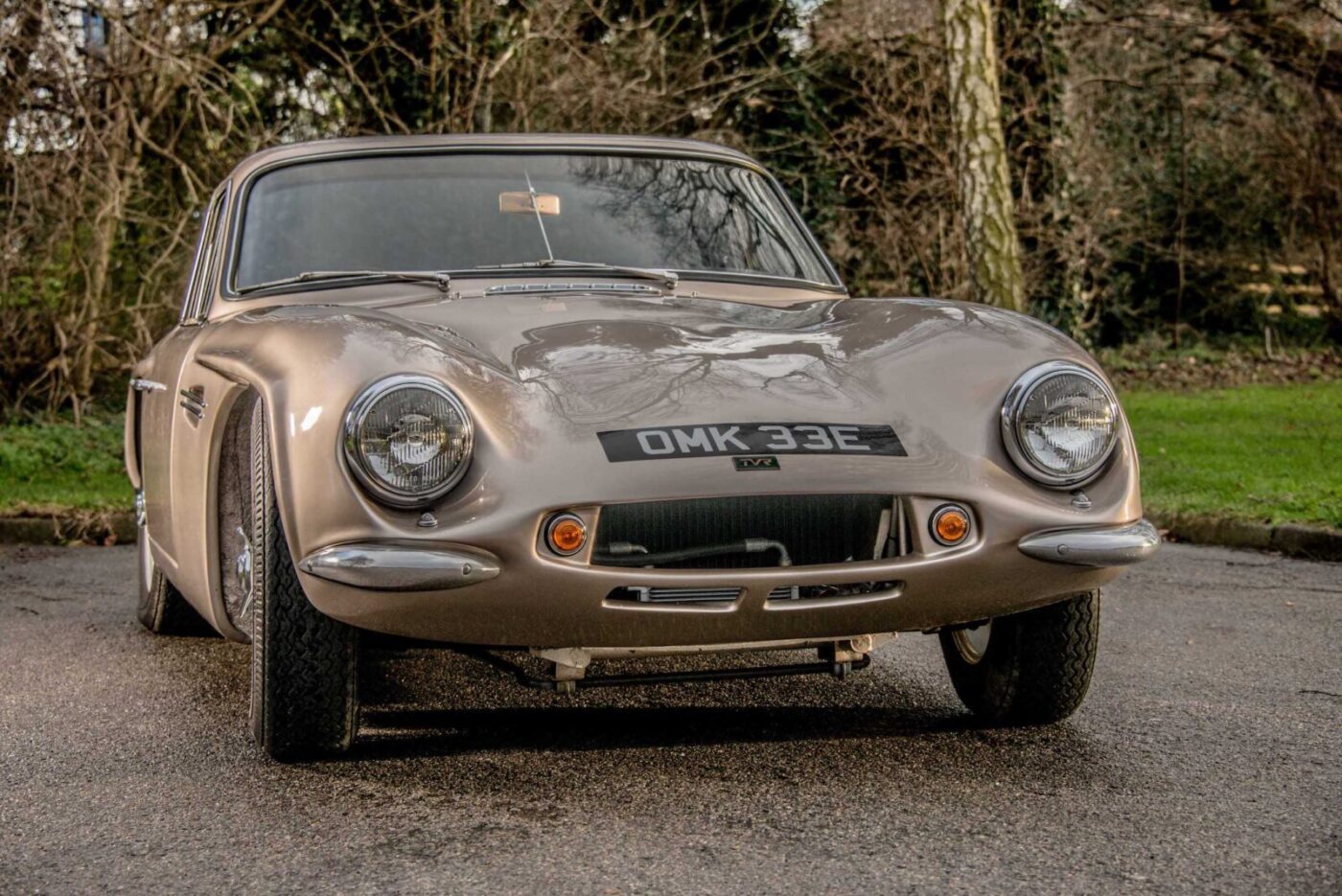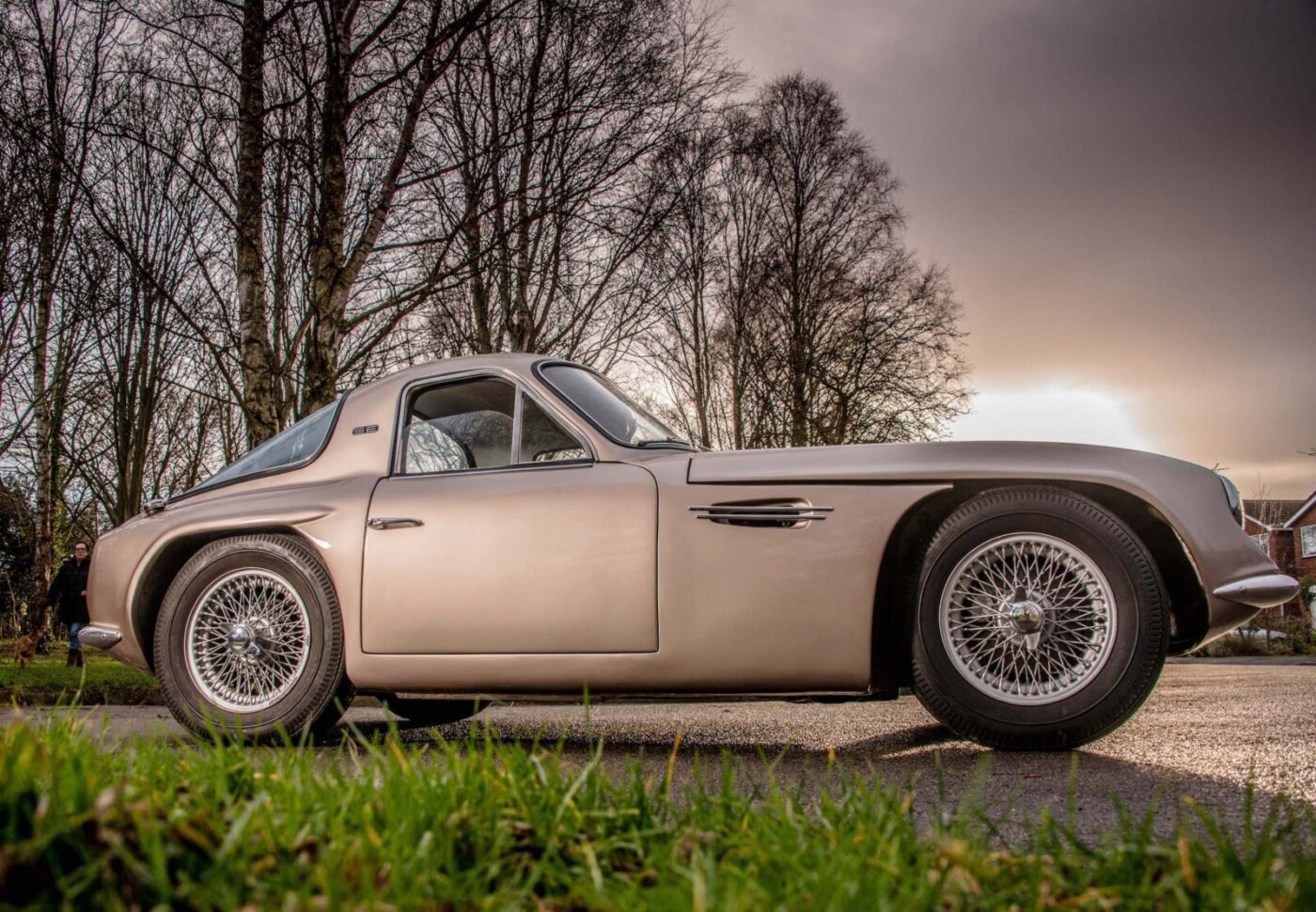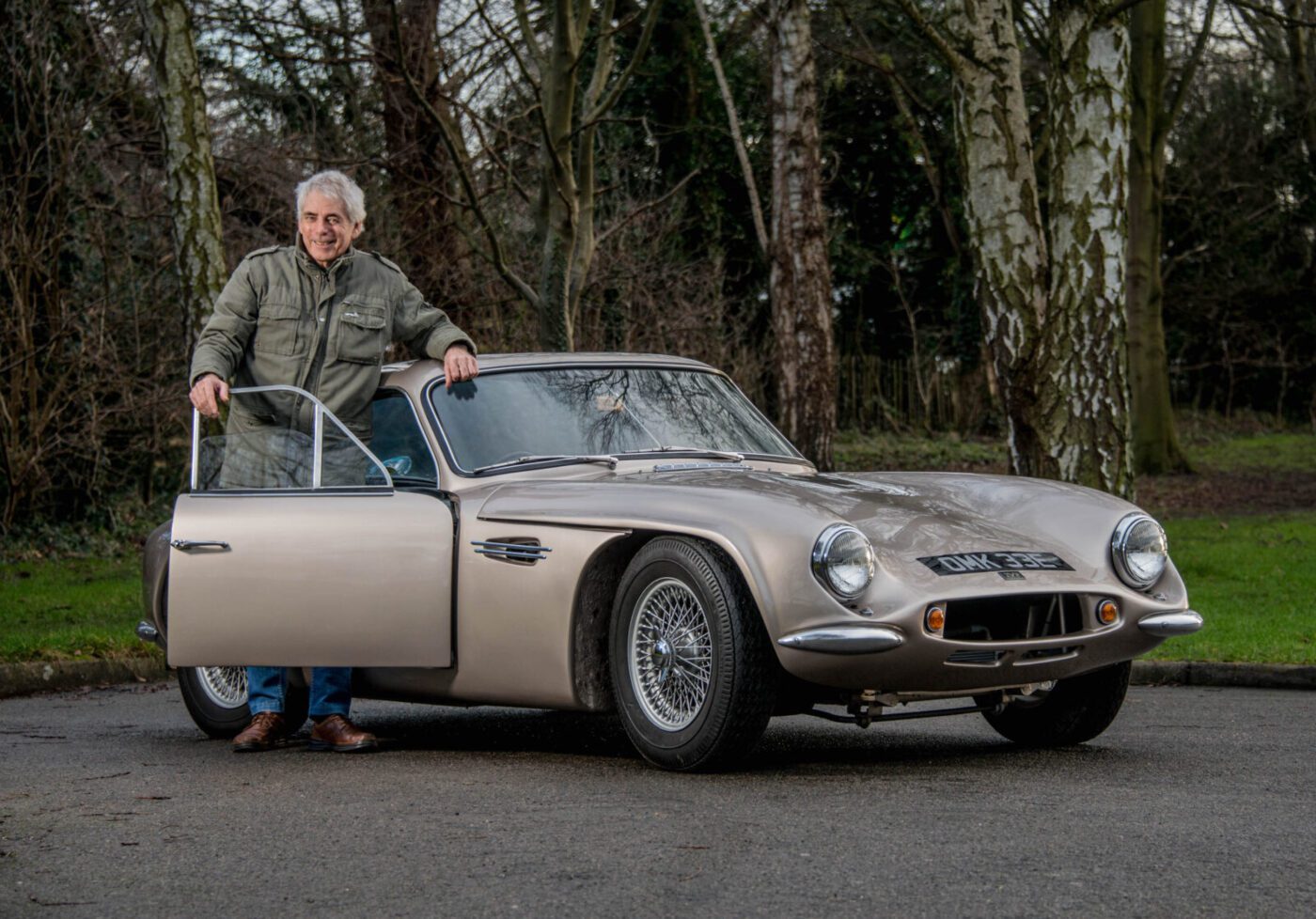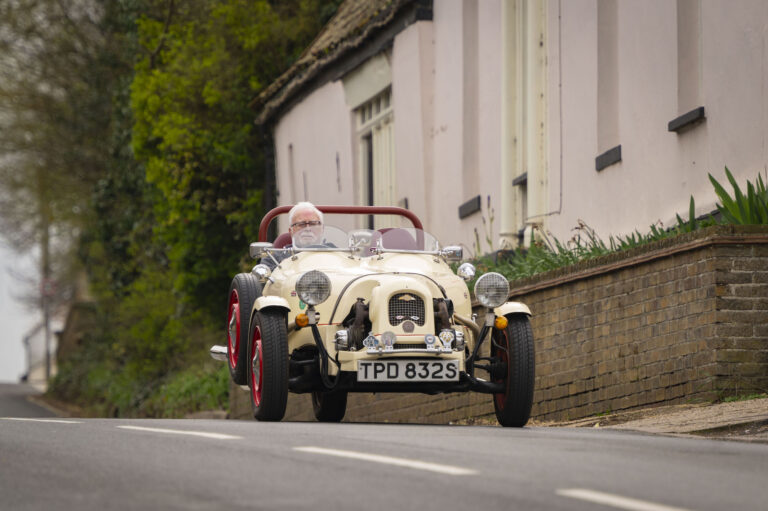The TVR was hidden under a cover at Barnet Motor Company, awaiting repair and not technically for sale.
But Clive McCormick wanted to have a look anyway and when sales manager Gerry Marshall drew back the sheeting, it was love at first sight.
A gold Grantura gazed back, and 48 years after first laying eyes on the car, Clive says now: “As soon as I saw it I just had to buy it – I didn’t think of the cost.”
And though he didn’t know it at the time, it wasn’t just any old Grantura; it was one of just four 1800SE models made by the Blackpool-based manufacturer, with a tuned Weslake engine pumping out 115bhp.
Which is only one of the reasons why Clive, now 74, will never part with a car he fully restored over a 15-year period starting in 2000.

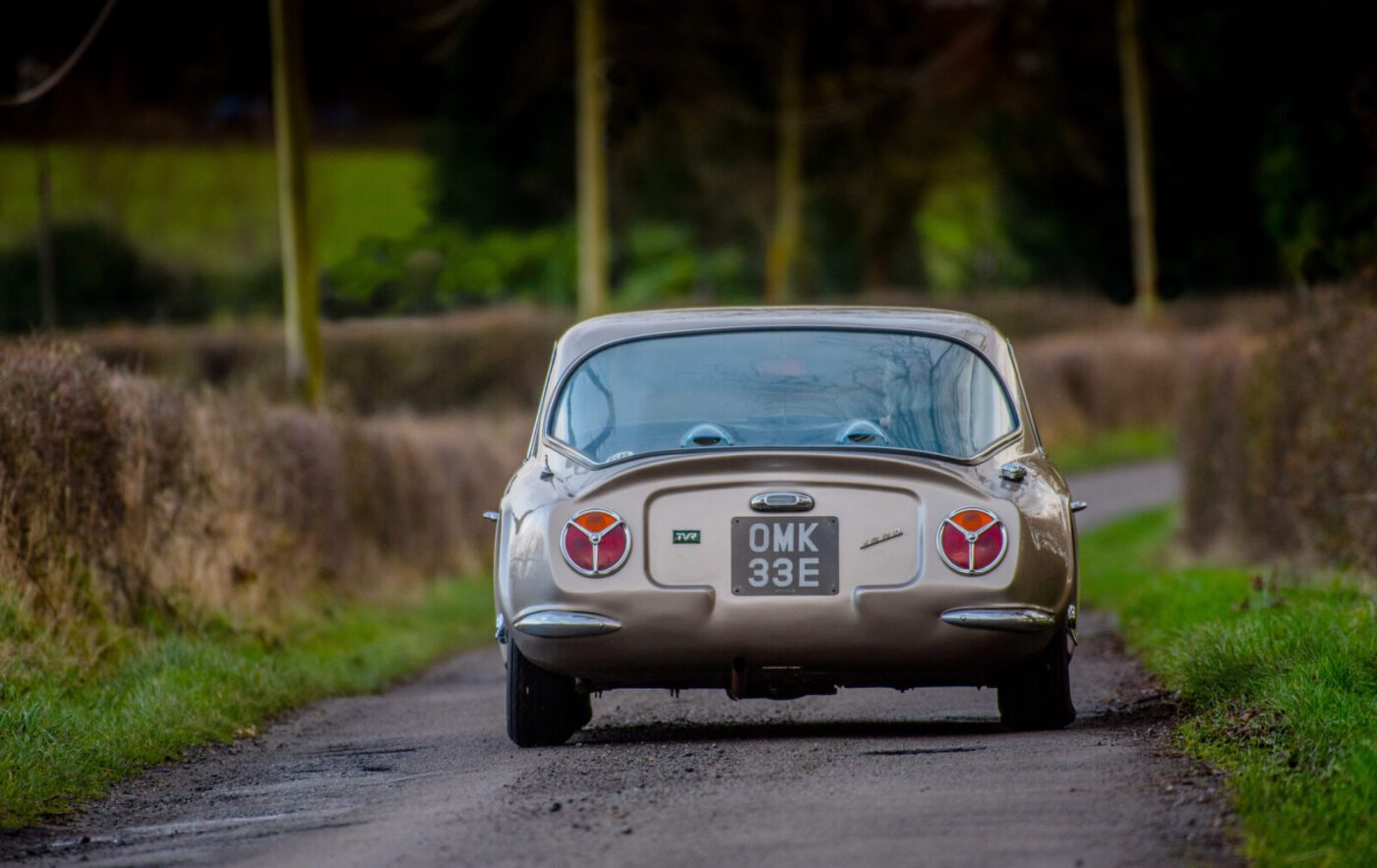
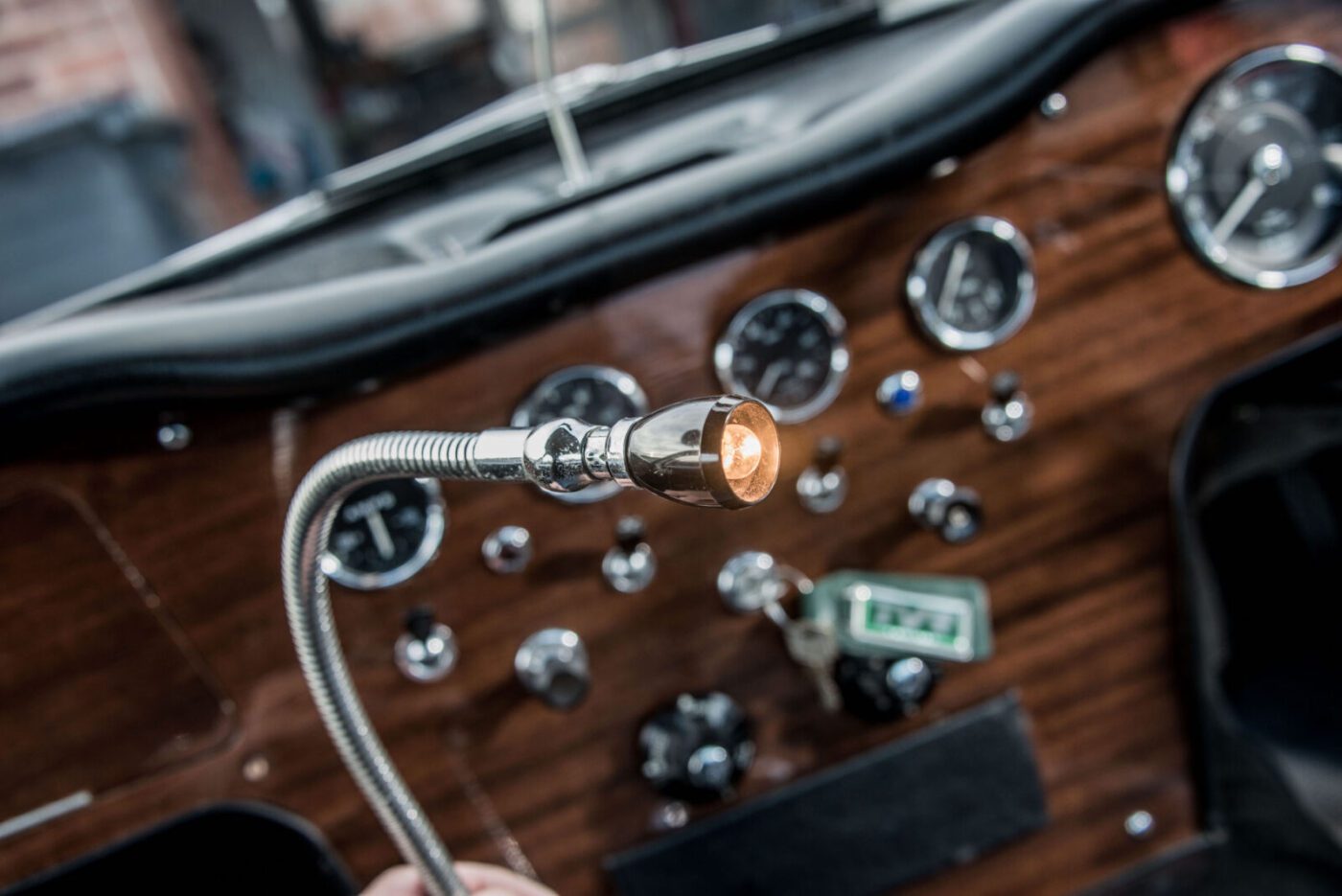
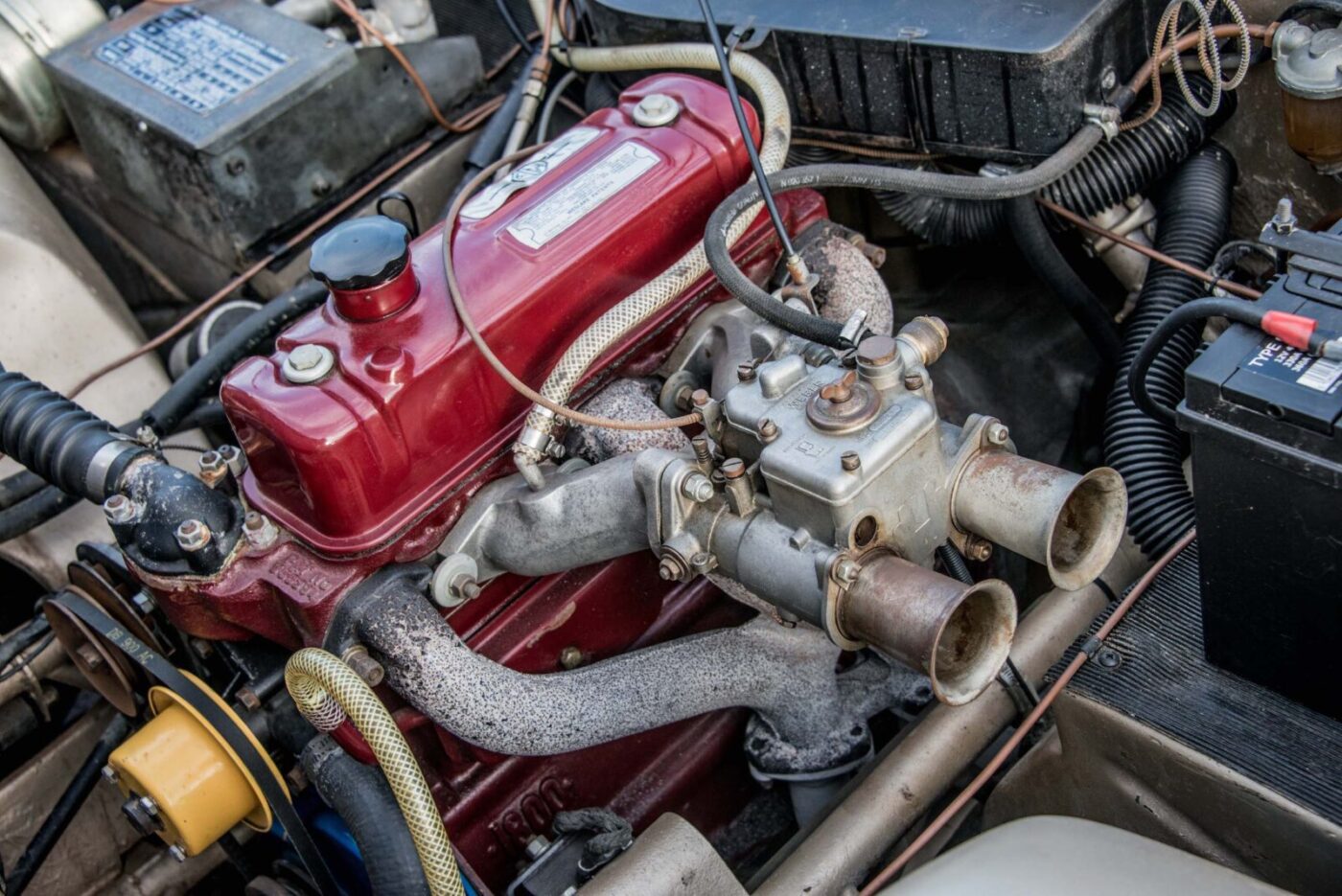
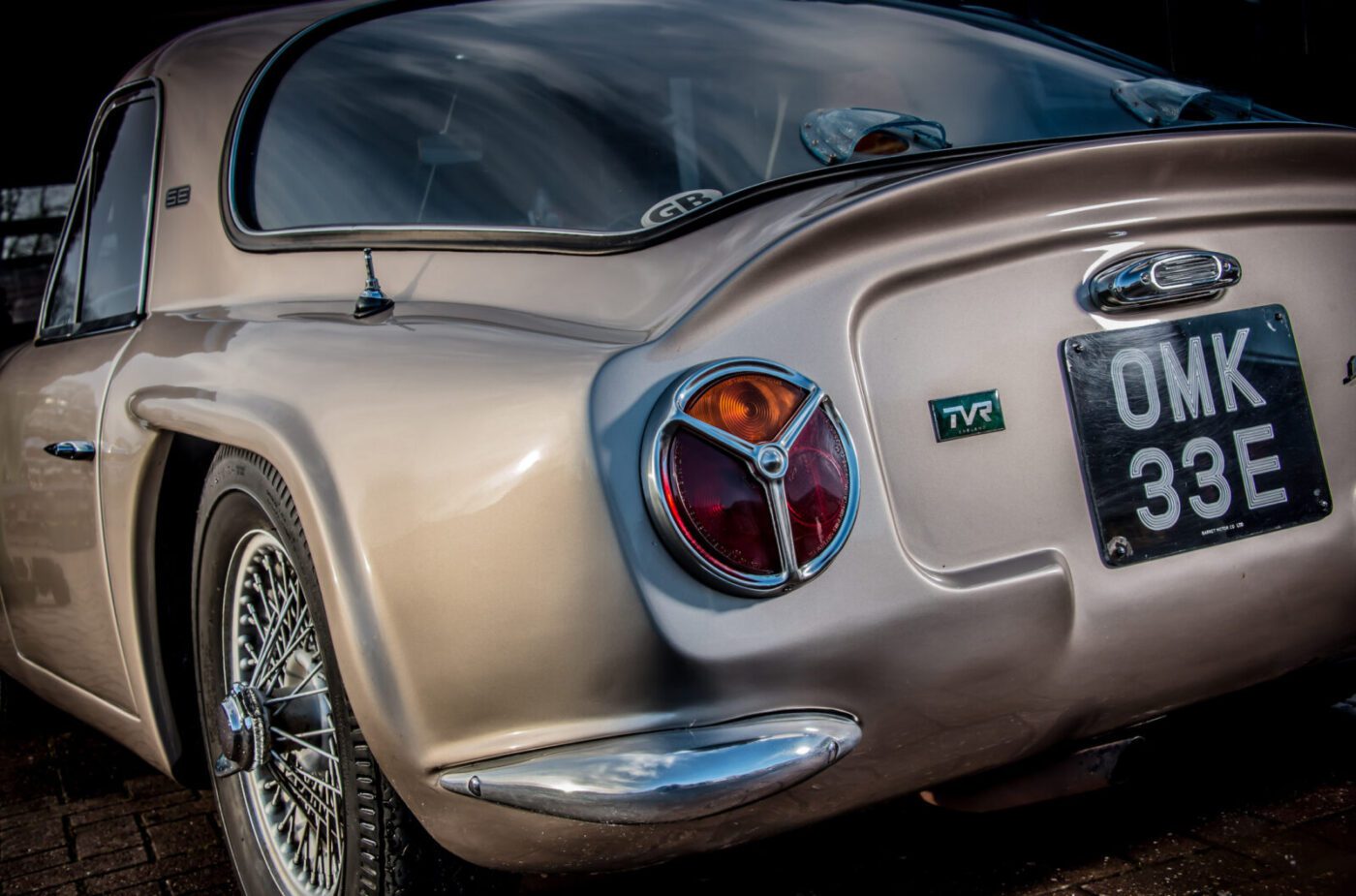
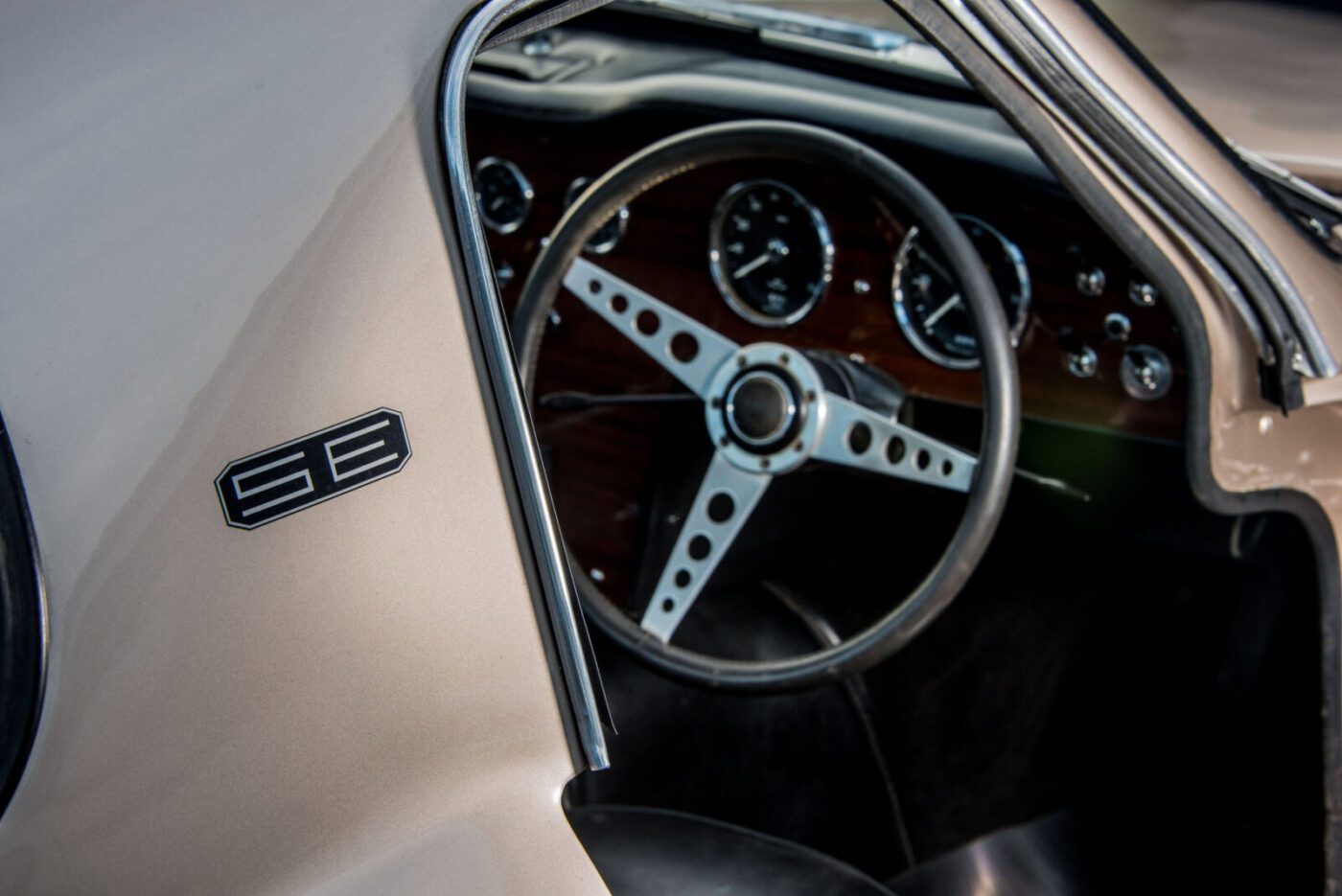
Hard work, dedication and love
“It’s like it’s part of me,” he says in the Warwick bungalow he’s lived in since 1974. “I’ve brought it back to life and I could never sell it. It’s been the subject of a lot of hard work, dedication and love.”
Although the car could now be worth up to £80,000, Clive says: “I don’t look at it as being money. It’s about how long I’ve had it, what I’ve done to it and what it means to me.
“I can still remember the overwhelming wonderment of first seeing it.”
It was the summer of 1970, and Clive was working in the transport department for Jaguar Cars in Coventry, making frequent trips to and from the company’s London depot.
On one such journey, he stopped in at Barnet Motor Company, run by TVR owner Martin Lilley, to look at a white Grantura 1800S on sale for £500.
Clive already had history with TVR, having owned a series IIa Grantura with a 1622cc MGA engine for three years, graduating from his first car, an Austin-Healey Sprite.
“I was looking for a Marcos but opted for the Grantura, bought it on hire purchase and resprayed it carmen red,” says Clive, going through a stack of TVR-related documents and photographs on the kitchen table.
“I went to a club meeting at Knowle near Coventry in the mark IIa, which had very rigid VW suspension. I spoke to a chap there who had a later model, an 1800S Grantura with spring and damper suspension and he took me out in it.
“I thought ‘this is much better than I’ve got, I must change the car to an 1800S’.”
The mark II was sold to one of the apprentices at Jaguar, and Clive’s pursuit of a mark IV 1800S led him to that garage forecourt in Barnet.
“I’d seen a white 1800S there, but it had quite worn out suspension drive shafts and steering joints,” he says. “It was all over the place. I would have bought that car but for the fact that I saw this other car covered up at the time.
“I asked the salesman, Gerry Marshall, about it and he said it had a little bit of a bump on the side but they were going to repair it.
READ MORE ABOUT SOME OF OUR GREATEST CLASSIC CARS WITH

A series of articles on our Cult Classics site.
I must have it
“He lifted the cover off and I could see it was a car I was interested in, especially the colour, Malibu Gold.
“I thought ‘I must have it’, even though it was a lot dearer. The 1800S was £500, and this was just under £1,000. I had it on HP someone else was paying it!”
Marshall, a renowned racing driver and a director of TVR, knew a thing or two about the marque, but even he gave nothing away about the car’s rarity, though he did tell Clive “it was a special and that it would do at least 130mph”.
“I just thought ‘it’s a powerful engine and a wonderful car’,” adds Clive, who returned to see the fully-prepared car two weeks later while delivering reconditioned engines and spare parts to Jaguar.
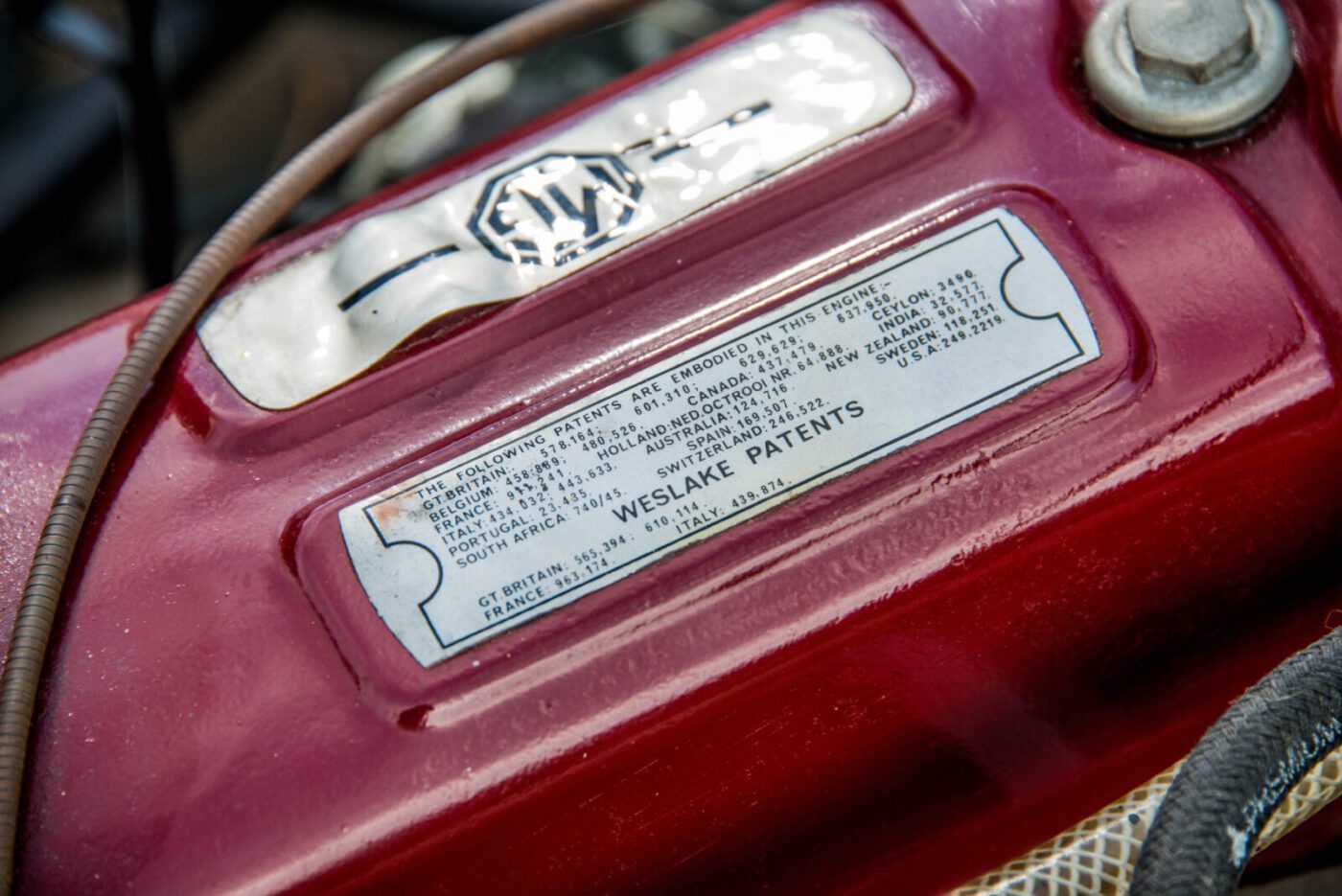
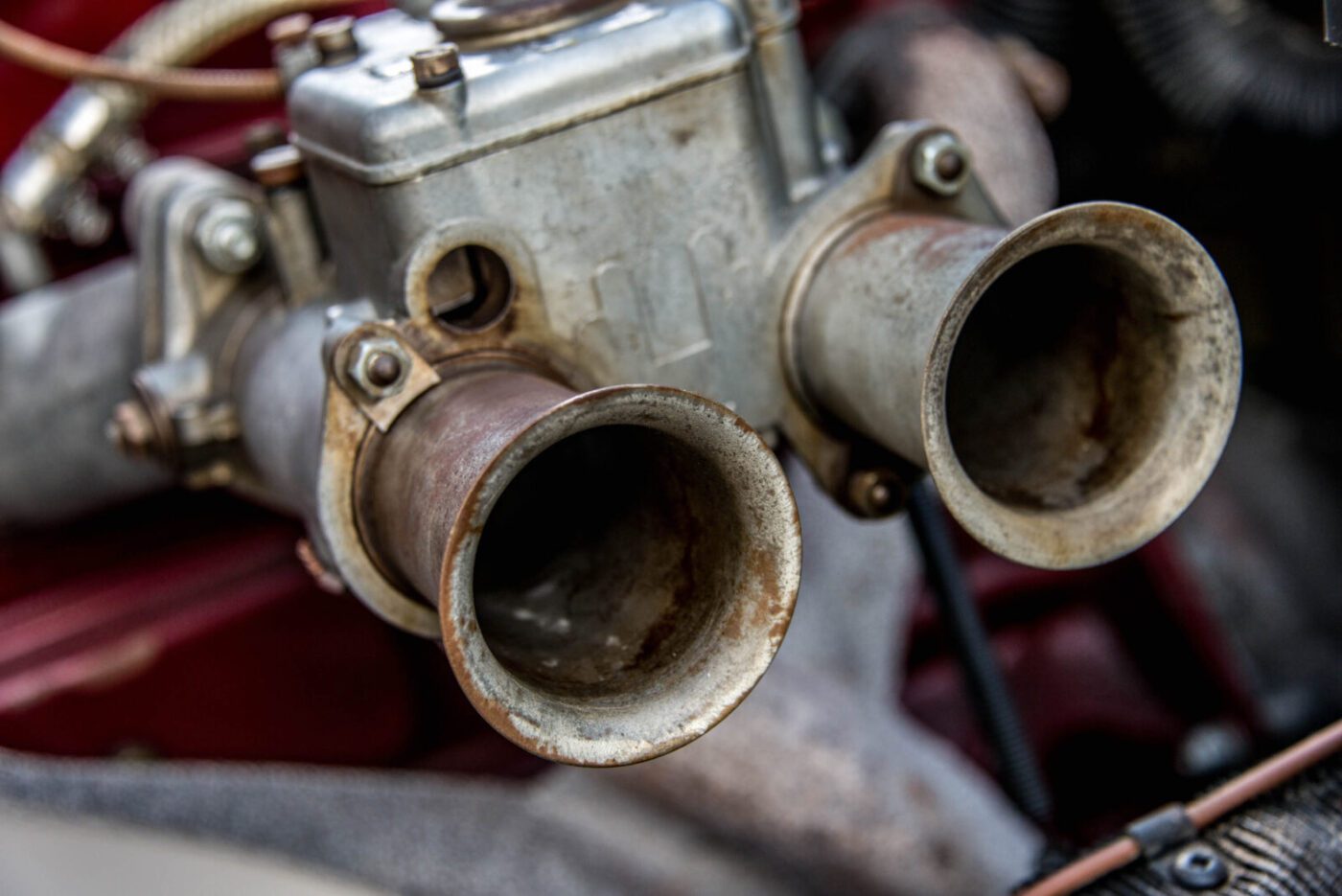
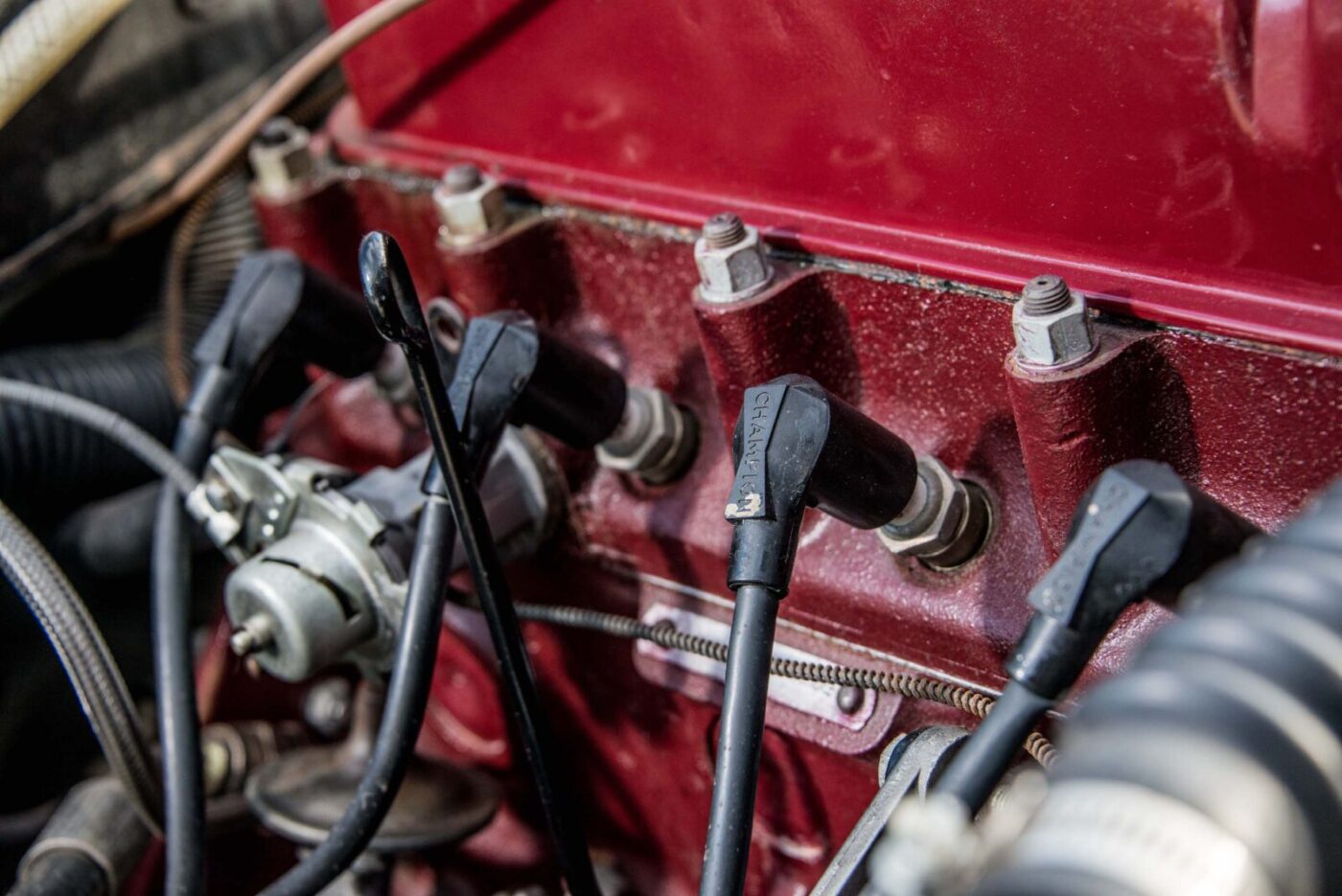
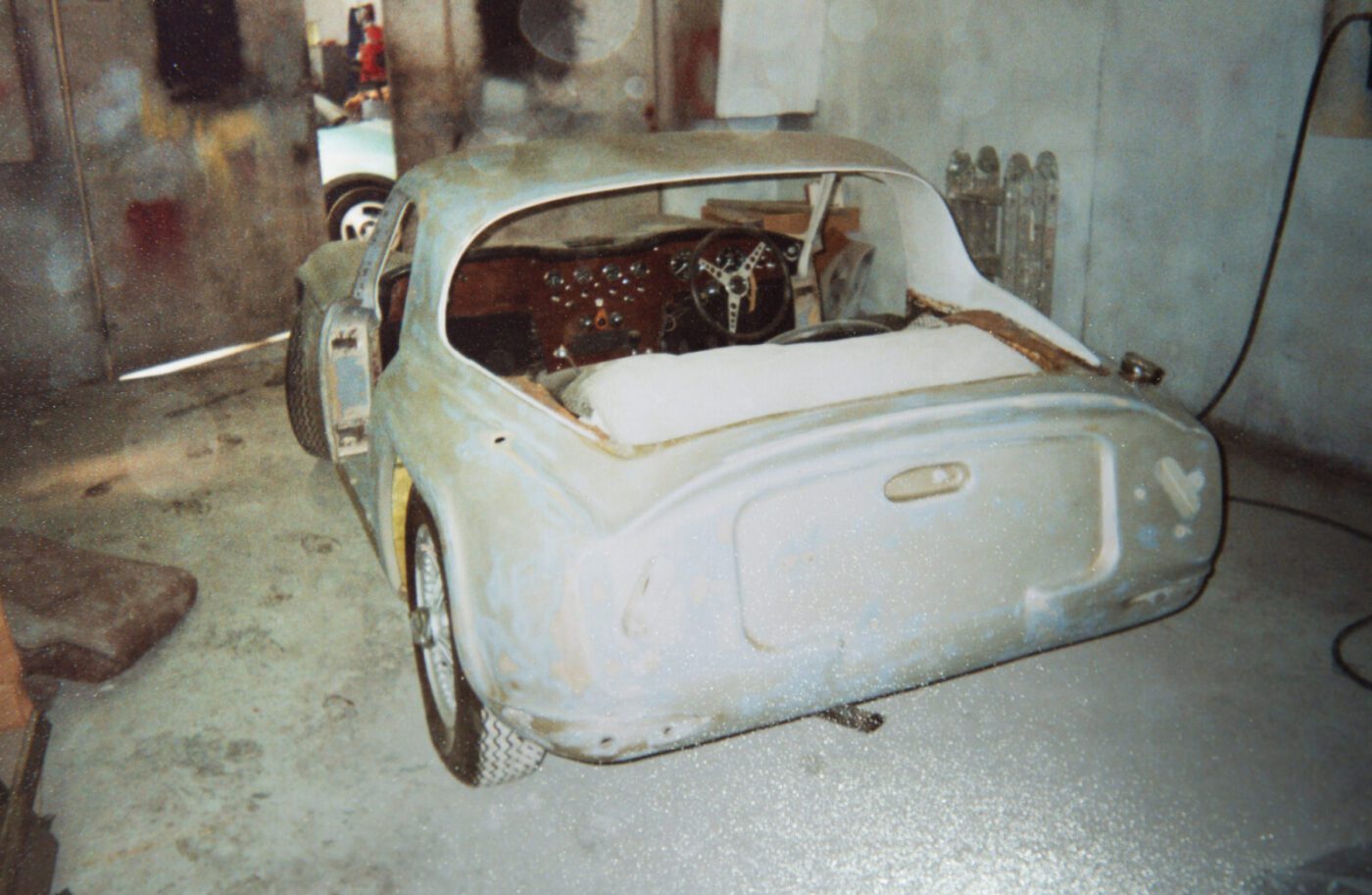
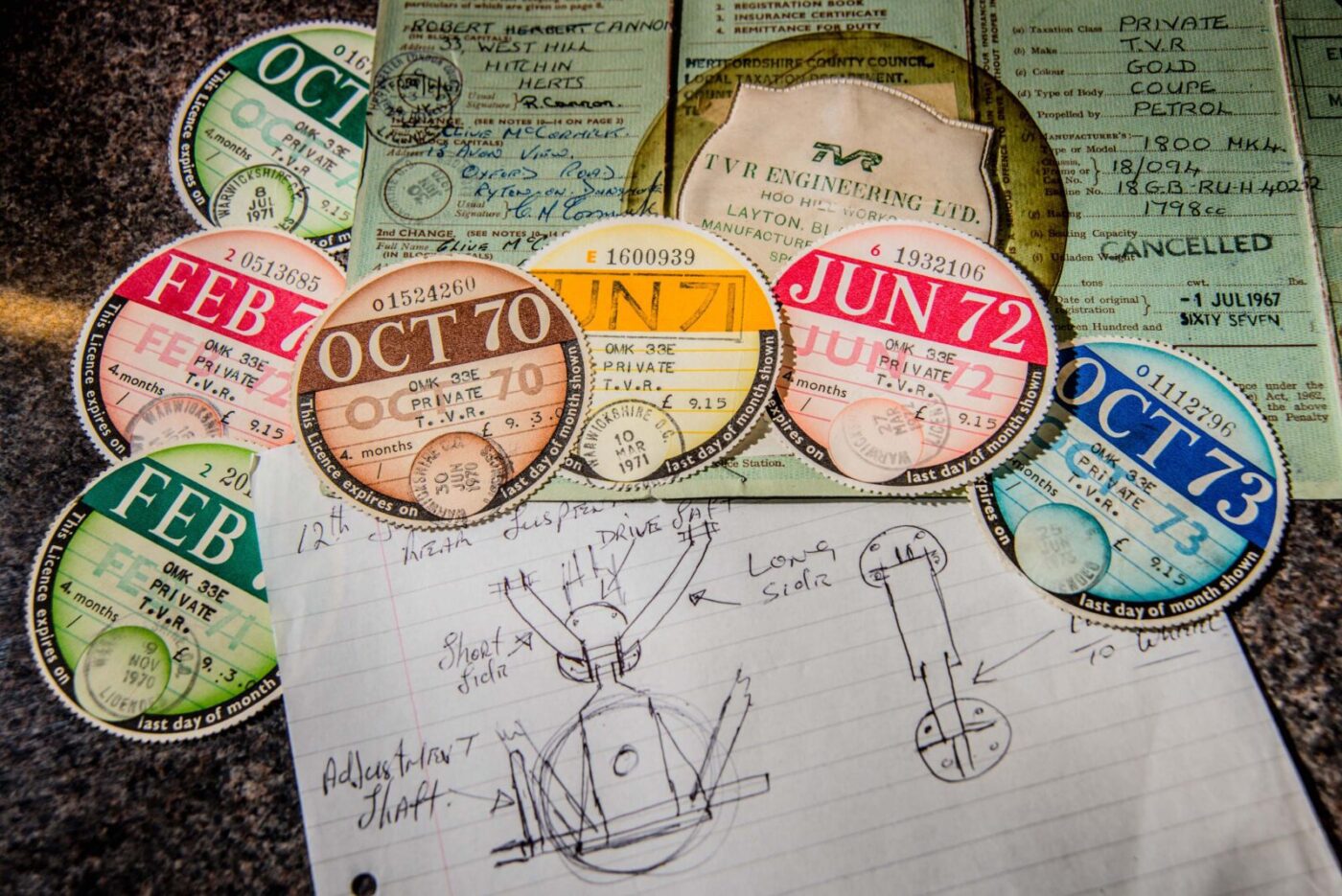
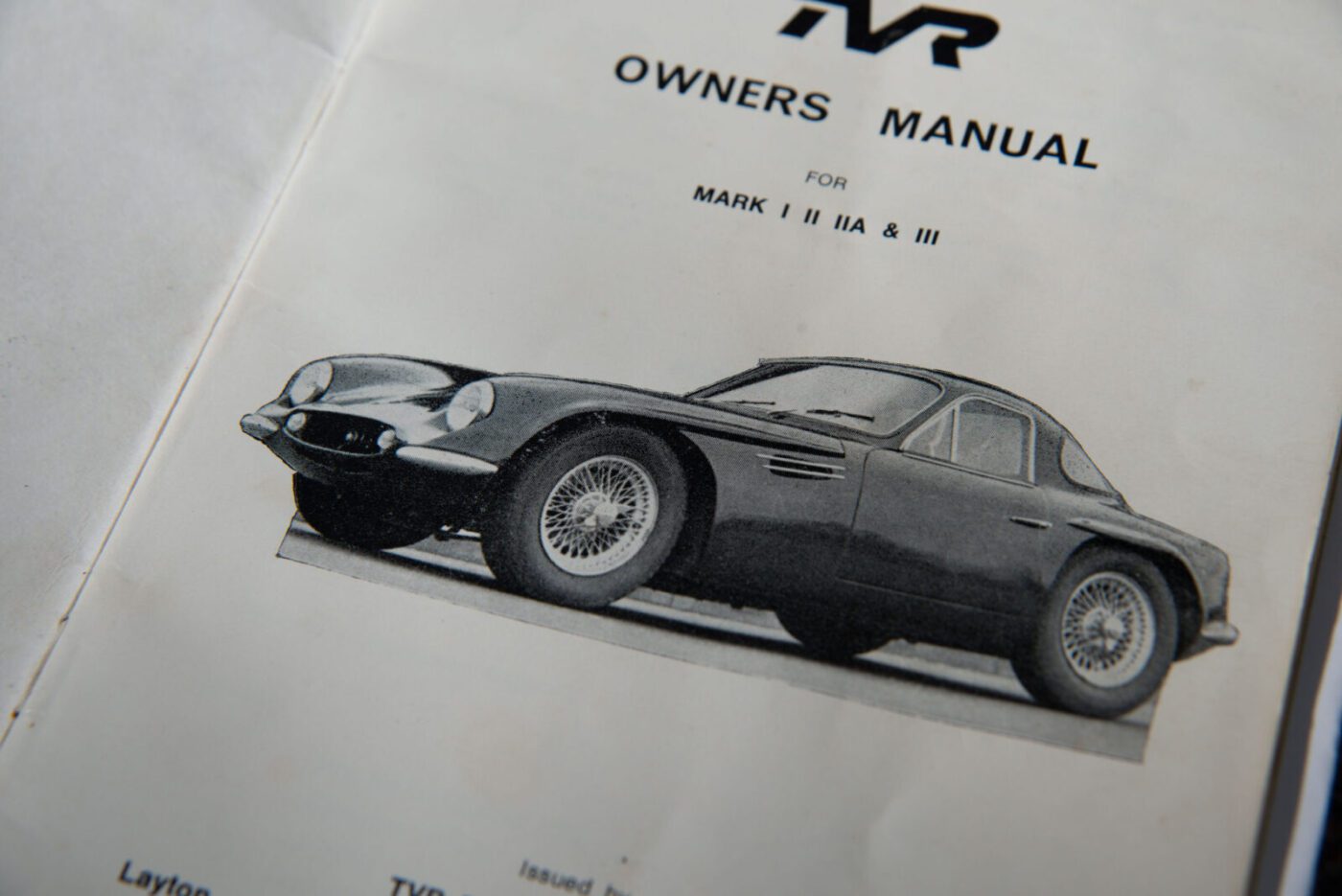
Smooth and very quick
“It was ready and waiting and, when I first drove it, because it was run in it was beautiful to drive – smooth and very quick. It doesn’t half go.
“The power, the gear changing, the suspension, there was just this excitement of wanting to sit in it all the time. At the time I didn’t know it was anything special.”
The Grantura was first introduced in 1958 using a fibreglass body wrapped around a tubular steel backbone chassis and VW Beetle-based suspension, with power provided by a variety of units from a 1,098cc Coventry Climax engine to the 1600cc from the MGA.
Its development continued against a backdrop of reliability issues, changes of ownership and financial strife which ultimately ended in liquidation in 1964, only for the company to be revived by Lilley the following year.
The Grantura’s rounded rear end was given the squared-off Manx-tail treatment for the 1800S in 1964, with round light clusters taken from the Ford Cortina and a longer chassis shared with the Griffith to allow for that car’s larger V8 engine.
After a break in production following liquidation, Lilley brought back the 1800S as the mark IV, with improvements in trim and a larger fuel tank.
81.5% of customers could get a cheaper quote over the phone
Protect your car with tailor-made classic car insurance, including agreed value cover and discounts for limited mileage and owners club discounts

Lively modern sportscar
Motor magazine described the Grantura as “a lively modern sportscar” which “can develop remarkably high cornering forces and still remain completely controllable when deliberately provoked”.
With the new Vixen on the horizon, the mark IV was to prove the last hurrah for the Grantura, with 78 produced in both right and left hand drive.
Of these, four were produced in tuned, SE specification, with a single DCOE Weber carb replacing the usual twin SUs on the 1798cc MGB engine, helping to boost performance from 98bhp to 115bhp at 7,500rpm.
The SE also boasted all of the optional extras available on the 1800S, including a close ratio gearbox, overdrive, an oil cooler, brake servo, 15-inch, 60 spoke alloy wheels and a laminated Sundym rear screen with extractor vents.
Costing £1,575 fully built in 1967, compared to £1,140 for an MGB GT or £1,057 for a Triumph GT6, the SE came at a premium reflecting its hand-built, low-production exclusivity.
Clive drove the car regularly until 1976, with few issues despite the TVR reputation for unreliability, save for a wheel bearing whine 18 months into his ownership.
“I investigated, took it to pieces and finally realised what was going on,” he says. “A quill shaft had snapped because of either the previous owner’s driving or an accident. It had been welded back together but was not perfectly square and had worn the wheel bearings out.
“I took it into the Daimler tool room and they cut it, ground it, machined it so it was completely squared up and welded it back together.
“It fitted perfectly and it’s still there now!”
With Clive embarking on a new career as a plumbing and heating engineer, the car was laid up in 1976 and didn’t move again for 24 years.
“I was too busy building the business up, so I didn’t bother with anything else,” he says. “The car was just being moved from garage lock up to garage lock up.”
It wasn’t until the year 2000 that Clive found the time to begin a restoration project that would last 15 years, and finally see him uncover the truth about his car.
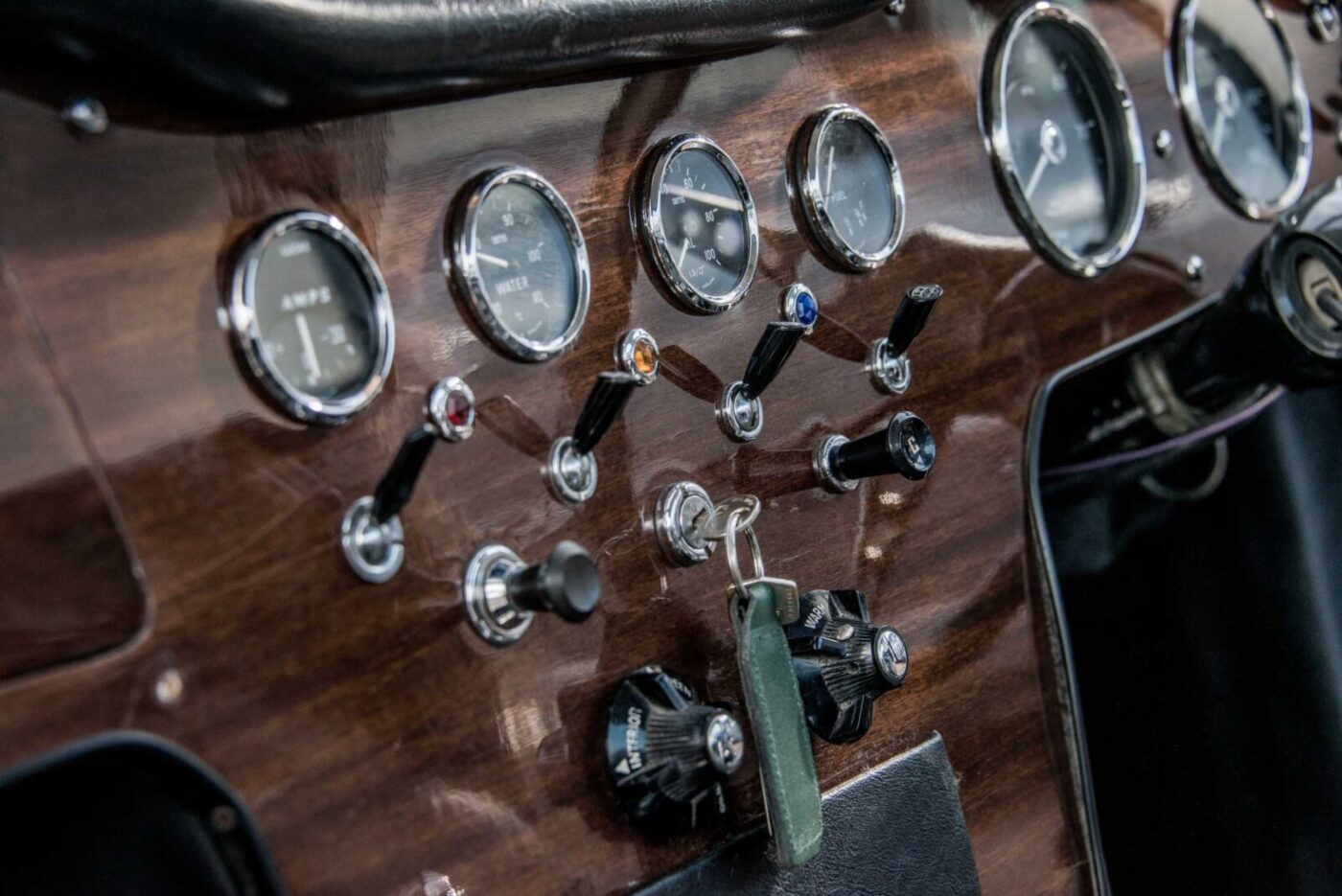
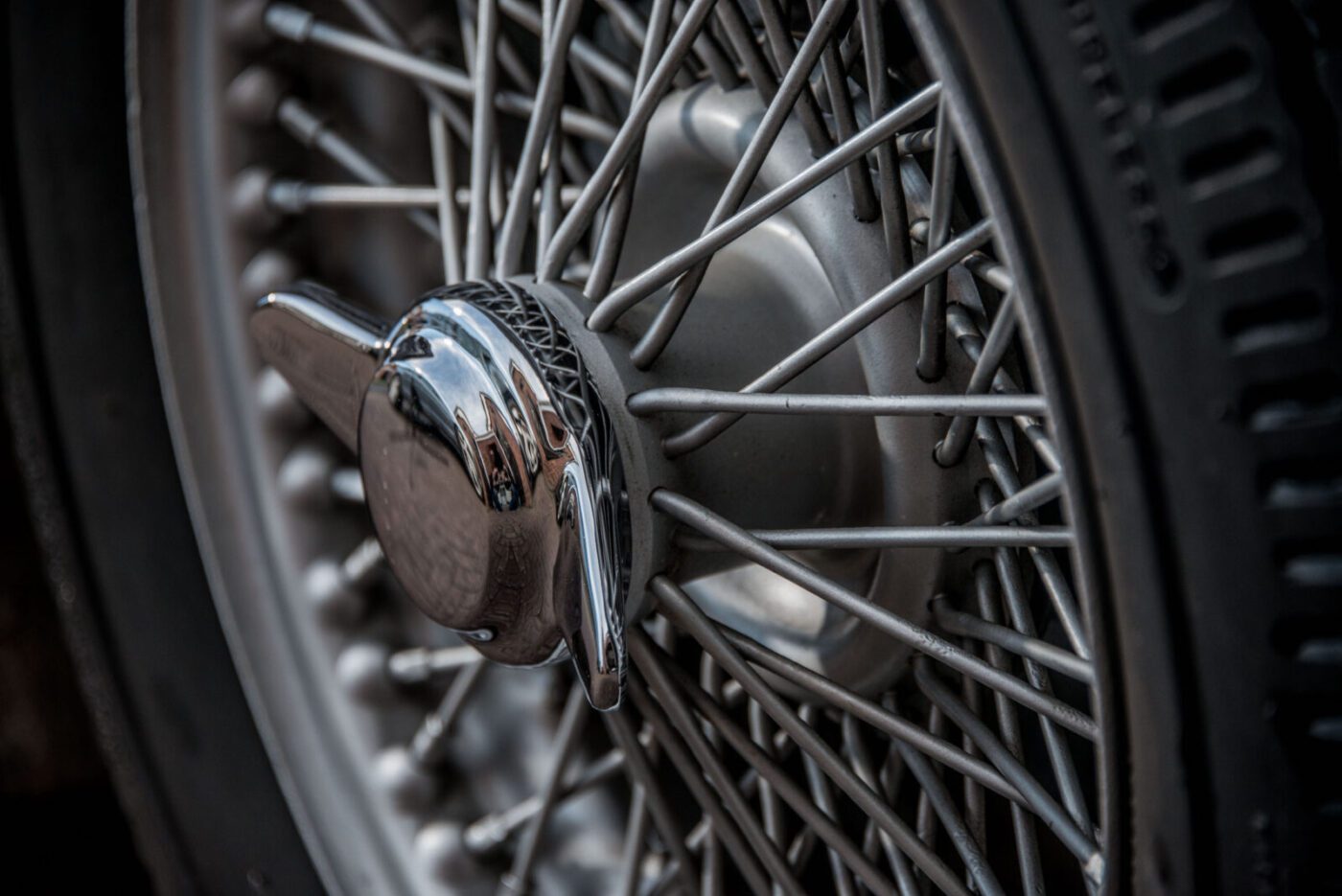
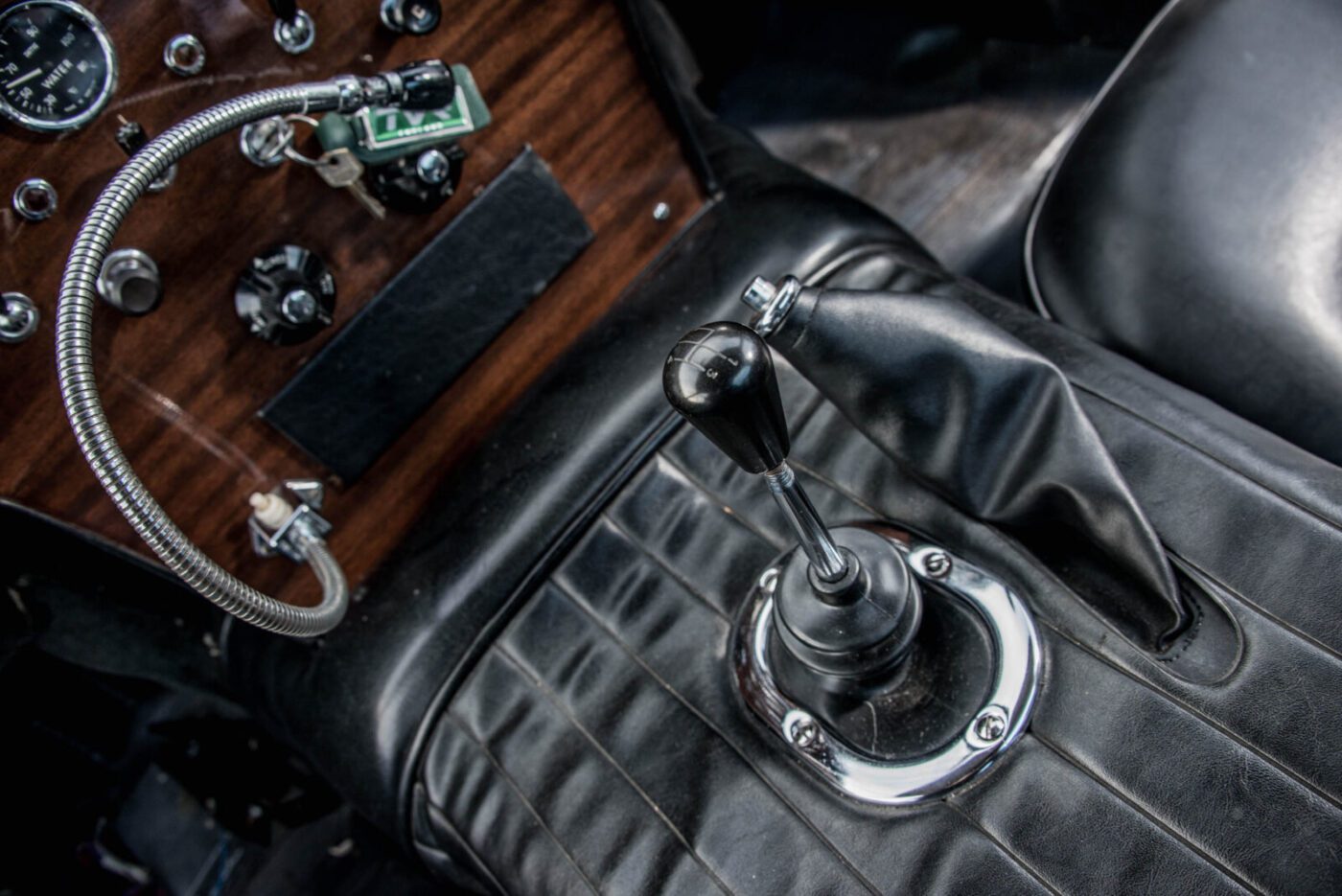
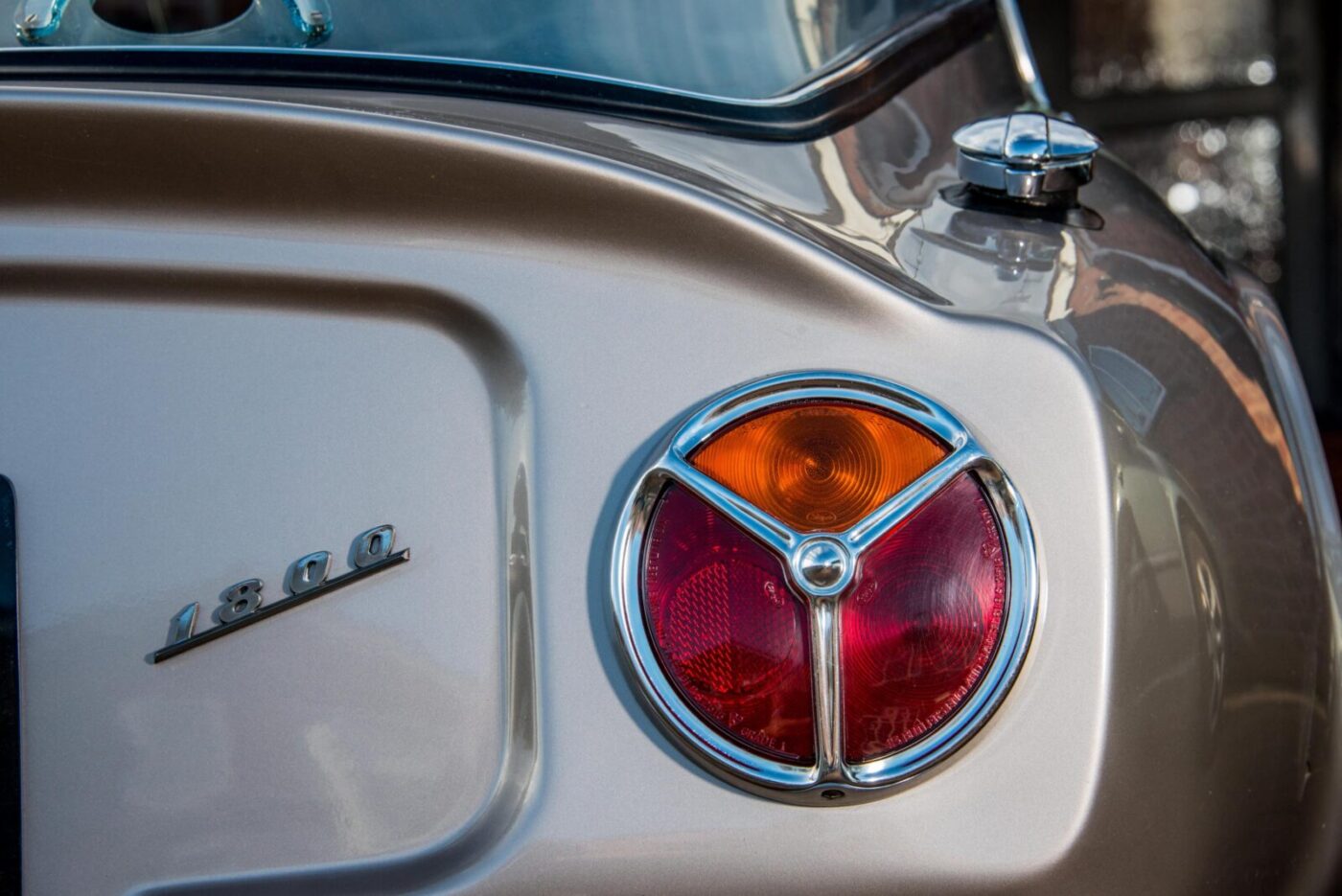
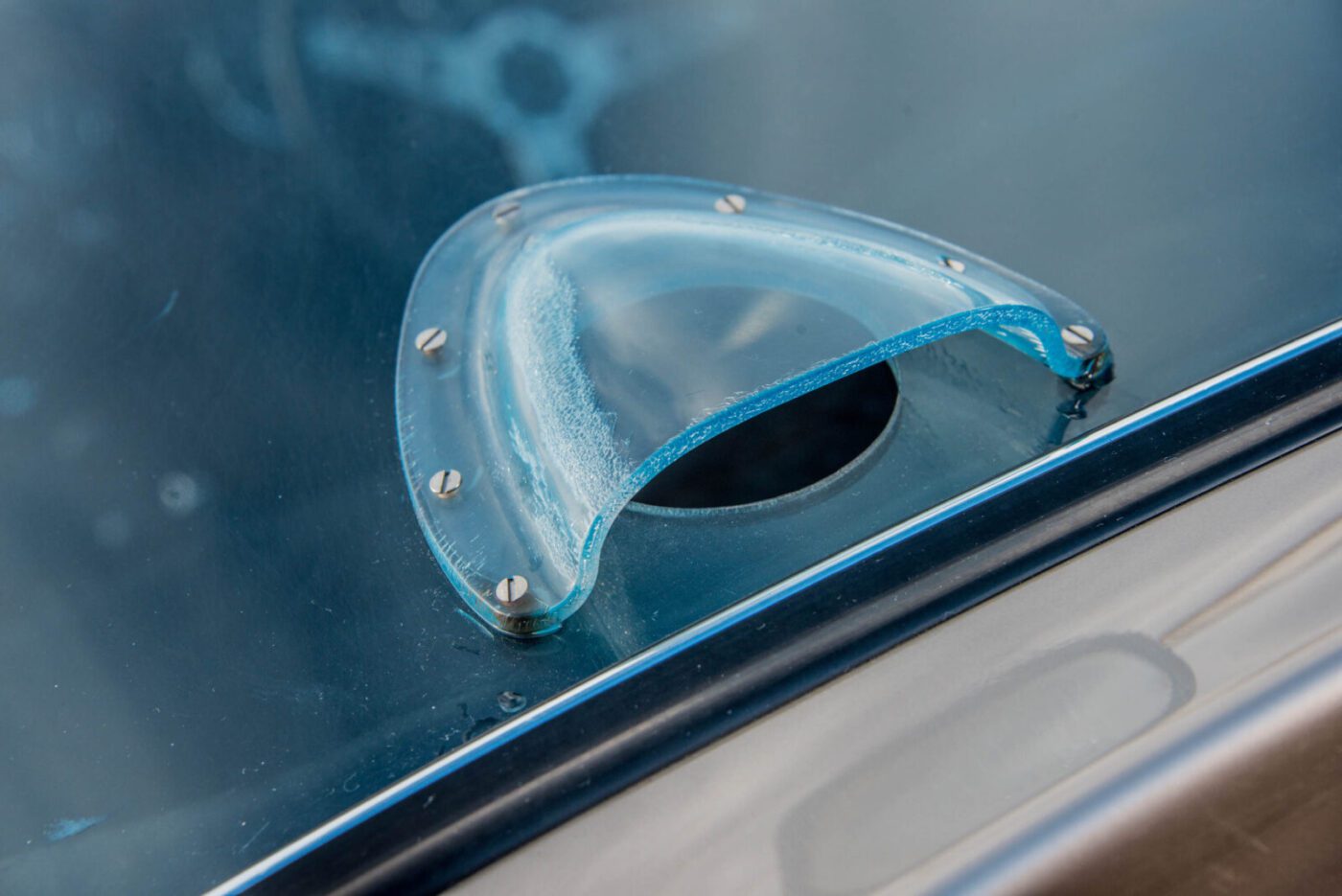
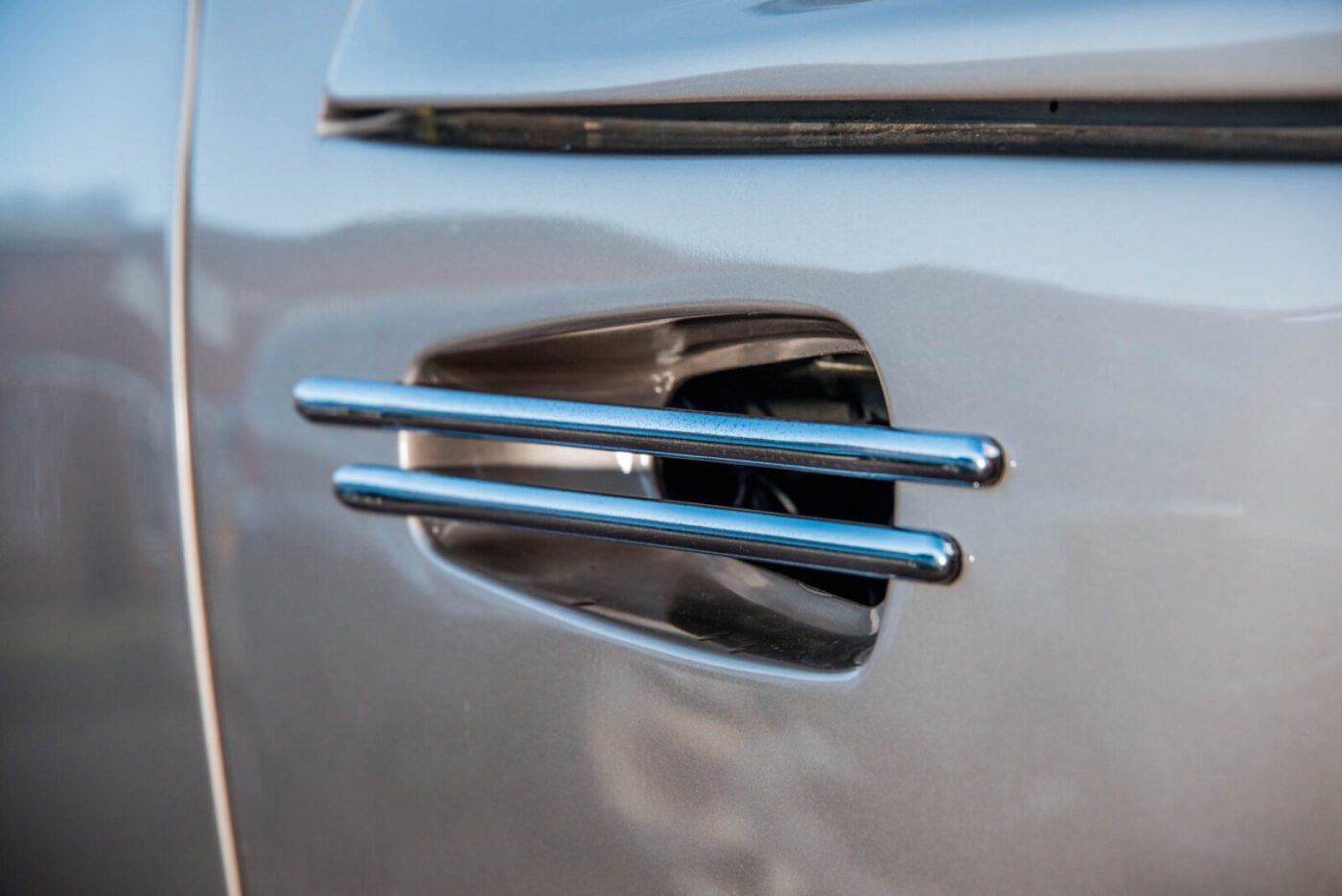
Something special
“When I came to renovate the car the chap that was helping me do it said the engine is something special, a Weslake engine,” he says. “That’s when I realised this was something special.
“I rang up for some spare parts and the man in charge of the spares department at Blackpool said it was one of four SE cars.
“I bought some parts from David Gerald, a TVR restoration specialist, and he didn’t believe it was what I told him it was. Then I met him at a show some time later and he said ‘oh, it is!’”
Clive did most of the work himself, partly out of enthusiasm and partly to keep costs down.
“I asked this bloke in Coventry what he thought it would cost to get it renovated,” he says. “He quoted me about £13,000, so I decided with the shock of that I would strip it down and start doing it myself in my garage. I took the engine out and pushed it in, jacked it up and put four crates underneath and lowered the body on to them.
“I took the gearbox out and wheels and suspension off and had the suspension all renovated. I sandpapered the tubular chassis lying on my back underneath the car and then hand-sprayed the chassis myself a goldish colour.”
The Grantura was then treated to a full respray in its original colour before Clive painstakingly put it back together, finally getting the car back on the road in 2015.
“It was the first time back on the road since the 1970s,” says Clive. “It’s all brand new now, brand new suspension and bushes so it’s not quite like it used to be. It’s going to take a long time for it to work in, it’s still a bit tight and stiff.”
While wife, Janet, provides the coffee, Clive readies the Grantura for a quick blast for our photoshoot.
Unfortunately, the heavens open after just a few minutes, but that’s nothing compared to the steam pouring from the engine bay as we pause to let the clouds pass.
A broken down TVR may be a cliche, but thankfully there was nothing seriously wrong – the car had been laid up for winter and Clive had drained the most of the water from the radiator and forgotten to refill it.
As well as local rides out, the car accompanied Clive and Janet on a trip to their farmhouse in France, another long-term renovation project.
“We wanted a different lifestyle from what was here, so we bought an old farmhouse in 2004,” he says. “I had an endowment mortgage, and I paid it off and had enough to buy the place in Brittany outright. We used it for holidays and I’ve been rebuilding it on and off for 14 years because part of it was derelict.
“We took the car over there and did about 120 miles out there. I didn’t want to put too many miles on it so we trailered it there.”
As well as the Grantura, Clive has also restored a barn find 1935 Lanchester 12/6 bought in 1984.
“I saw it for sale in Bishop’s Stortford in a barn along with other vehicles,” he says. “It had seized up and needed a lot of work. I paid £725, brought it back on a transporter and started to renovate that over many years. That one took me 34 years!”
There’s also an Austin 7 in a lock up garage in Leamington that Clive says he hasn’t even seen for eight years…
READ MORE ABOUT SOME OF OUR GREATEST CLASSIC CARS WITH

A series of articles on our Cult Classics site.
Clive’s heart skips a beat
But it’s the Grantura that, after nearly 50 years, still makes Clive’s heart skip a beat.
A car that, as far as he knows, may be truly one of a kind.
“A bloke who came round a couple of years ago to do our double glazing said ‘what if it’s the only one?!’ That’s why I’m not selling it!” he laughs.
“I think I will be putting it into a museum one day, maybe at Gaydon. I wouldn’t like to think people are going to race it. I want them to admire it in a museum for a long time to come.”
